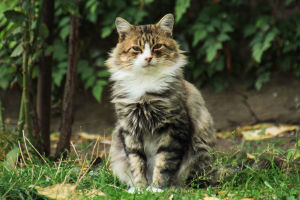Hey, Lykkers! Have you ever wondered whether beetles and ladybugs are actually the same thing? While they may look quite similar in some ways, there are important differences between them.
In this article, we'll dive into the world of these fascinating little creatures, exploring how they differ and why they both play crucial roles in nature.
Understanding Beetles: More Than Just Bugs
Beetles are part of the insect family called Coleoptera. With over 350,000 species worldwide, they make up one of the largest and most diverse groups of insects on the planet. They can range in size from tiny critters to larger, more intimidating beetles like the stag beetle. One of the most distinguishing features of beetles is their hard, protective outer shell, known as the "elytra." These shells cover their wings and protect them from predators, making beetles incredibly resilient creatures.
Beetles are found in nearly every environment, from forests to deserts to your backyard. Many beetles are scavengers, feeding on decaying plants or animals, while others can be pests, damaging crops. Some beetles, like the ladybug, are beneficial to humans as they help control pest populations.
The Ladybug: A Little Helper in Nature
Ladybugs, also known as ladybirds, belong to the Coccinellidae family. While they are technically a type of beetle, their appearance and behavior set them apart. Ladybugs are much smaller than many other beetles, typically about 0.3 to 0.8 cm in length. They are best known for their bright red or orange bodies with black spots, although some species can be yellow or even black.
What makes ladybugs especially helpful is their diet. They are voracious eaters of aphids, scale insects, and other plant-damaging pests. This makes them invaluable in gardens and agriculture, where they naturally help control pest populations without the need for chemical pesticides. Their cheerful appearance and helpful habits have earned them a place in many cultures as symbols of good luck.
What Makes Them Different?
Despite both being beetles, beetles and ladybugs differ in several ways. First, let's talk about size. Ladybugs are generally much smaller than many other types of beetles. While beetles can grow to a large size, ladybugs remain quite petite. In terms of color, ladybugs are famous for their bright red or orange bodies with black spots. Beetles, on the other hand, come in a wide variety of colors, including brown, black, and metallic shades, depending on the species.
Another key difference lies in their behavior. While beetles can have a wide range of diets—some are herbivores, others are carnivores, and some are scavengers—ladybugs are primarily insectivores, focusing on aphids and other small insects. Their role in controlling pest populations is why they're often referred to as "gardener's best friend."
How Are They Alike?
Now that we've covered the differences, let's look at how beetles and ladybugs are alike. The most obvious similarity is that ladybugs are actually a type of beetle, meaning they share a common ancestor and many physical traits. Both have a hard outer shell, six legs, and antennae, which are common features in beetles. Both also undergo complete metamorphosis, which means they start as eggs, grow into larvae, then pupate, and finally emerge as adults.
Both beetles and ladybugs can also play important roles in ecosystems. While some beetles are pests, others help with decomposing organic matter, which is essential for nutrient recycling. Similarly, ladybugs contribute to the health of plants by keeping harmful insect populations in check.
Why Does It Matter to Us?
Understanding the differences and similarities between beetles and ladybugs can help us appreciate the roles they play in nature. For gardeners, knowing how ladybugs help control pests can be a great reason to welcome them into your garden. If you're dealing with pest problems, attracting ladybugs can be an organic and eco-friendly solution.
On the other hand, beetles, though sometimes seen as pests, are incredibly important to the environment. Many beetles help break down organic material, contributing to soil health and the overall balance of ecosystems. Even pest beetles, while causing damage, are part of the natural cycle, and understanding their behavior can help us manage them more effectively.
Conclusion: More Than Meets the Eye
So, Lykkers, while beetles and ladybugs might look alike at first glance, they are two distinct creatures with unique roles in the natural world. Whether they're helping to control pests, break down organic matter, or simply adding to the diversity of our planet's ecosystems, both beetles and ladybugs are fascinating in their own right.
Next time you spot a ladybug in your garden or a beetle in your backyard, take a moment to appreciate their contributions to the environment. By understanding the differences between these creatures, we can better care for our ecosystems and support the biodiversity that keeps our world running smoothly.
Have you spotted any ladybugs or beetles recently, Lykkers? Share your experiences with us!


